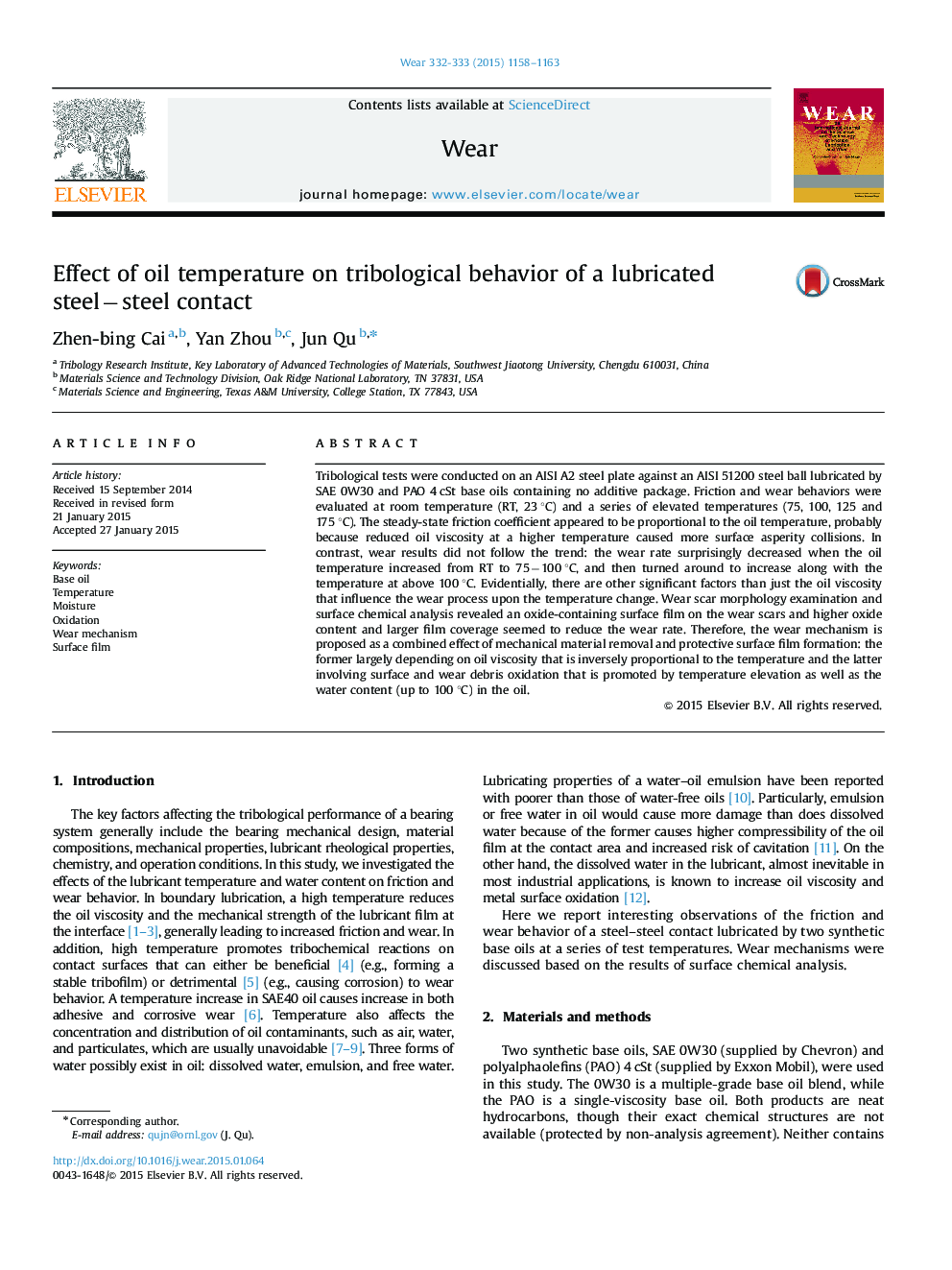| Article ID | Journal | Published Year | Pages | File Type |
|---|---|---|---|---|
| 617127 | Wear | 2015 | 6 Pages |
Tribological tests were conducted on an AISI A2 steel plate against an AISI 51200 steel ball lubricated by SAE 0W30 and PAO 4 cSt base oils containing no additive package. Friction and wear behaviors were evaluated at room temperature (RT, 23 °C) and a series of elevated temperatures (75, 100, 125 and 175 °C). The steady-state friction coefficient appeared to be proportional to the oil temperature, probably because reduced oil viscosity at a higher temperature caused more surface asperity collisions. In contrast, wear results did not follow the trend: the wear rate surprisingly decreased when the oil temperature increased from RT to 75−100 °C, and then turned around to increase along with the temperature at above 100 °C. Evidentially, there are other significant factors than just the oil viscosity that influence the wear process upon the temperature change. Wear scar morphology examination and surface chemical analysis revealed an oxide-containing surface film on the wear scars and higher oxide content and larger film coverage seemed to reduce the wear rate. Therefore, the wear mechanism is proposed as a combined effect of mechanical material removal and protective surface film formation: the former largely depending on oil viscosity that is inversely proportional to the temperature and the latter involving surface and wear debris oxidation that is promoted by temperature elevation as well as the water content (up to 100 °C) in the oil.
